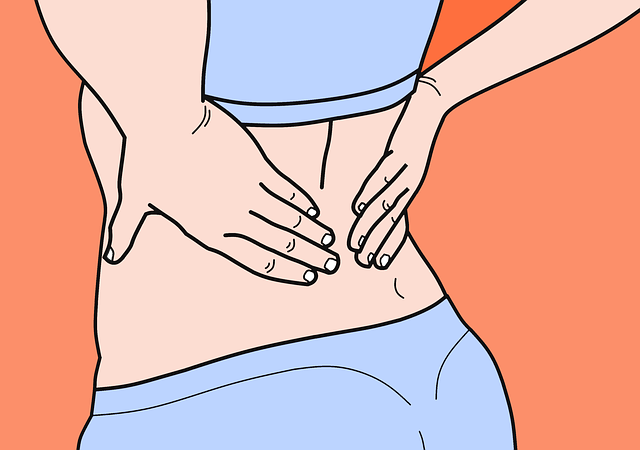Archive for April 2017
Causes of Your Back Pain: Extension Intolerance
Extension-based intolerance
Extension-based pain is caused by the opposite of flexion-based back pain; while the latter is exacerbated by bending over, extension-based pain is caused by too much arch in the back, often brought on by conditions such as anterior pelvic tilt. The people most affected are those who are frequently on their feet, and the problem is mainly postural in origin- that is, improper posture with a weak set of core muscles can cause damage to the vertebrae.
Common conditions resulting from extension-based pain
A spine in neutral posture is considered to be extended which means that any extra curvature contributes to hyperextension of the spine. Staying in this position for long enough contributes to the following conditions:
facet joint syndrom
spondyloisthesis
spinal stenosis
You can test yourself for extension intolerance by lying on your back with a normal curve in your spine. Now try flattening your back to the ground; if you feel better in this position, you may be extension intolerant
How we address extension-based intolerance at Scorca Chiropractic
Because patients with extension intolerance will often present with anterior pelvic tilt, this is a good jumping off point for treatment. We focus on exercises that strengthen the muscles of the core without arching the back and establish anterior core control. Chiropractic adjustment helps to address any problems related to nerve pain resulting from misalignment of the spine. Call our office in Fremont to schedule an appointment and let go of your extension based back pain today!
Highly Effective Workout Habits
Working out is not a chore; it is a commitment.
It’s a commitment to your health in the moment, to the longevity of your body and to preserving range of motion in old age. If you are someone who struggles to get motivated when it comes to working out, take a minute to boil it down to these basic commitments.
Highly effective habits for working out
- Seek variety: cardio one day, weight training the next. Mixing up your daily workout is a great way to overcome the monotony that can make working out feel like a chore.
- Avoid working out just for looks: yes looks are important for confidence, but don’t focus soley on those muscles. There are 29 muscles that constitute your “core” and that is a lot more than just the abs.
- Avoid taking short cuts: pressed for time? Don’t skip the warm up; that is the number 1 way to way to injure yourself.
- Stretch! To improve your circulation and the elasticity of your joints which will help improve range of motion and prevent injury.
Working out in Fremont, CA
Few people realize that the efficacy of each work out is highly dependent on factors outside of the weight room. For example, an imbalanced spine can cause you to build muscle unevenly or at a much less efficient speed. At our office in Fremont, we establish spinal alignment and ensure that the muscles and structures of your body are in conducive shape to reap the greatest reward out of each workout. Give our office a call to schedule an appointment today.
Dr. Francis Scorca, D.C.
The Hype on Standing up at Work
Sitting is lethal in large doses, but so is standing!
Any position is bad, especially for your back, when held for long periods of time. All the hype surrounding sitting as the new smoking ignores the fact that plenty of jobs require standing for long periods of time also, and the back pain can be just as intense. Going all in for one or the other is not necessarily going to guarantee you an escape from pain or a longer life as is claimed by the standing desk phenomenon.
Is there a happy medium between sitting in standing if you must work at a desk?
Humans are meant to move- there are no two ways about this; we are meant to change positions between horizontal and vertical, sitting and standing, exercising and stretching in equal parts throughout the day. Office workers face the quandary of being tied to a desk which requires them to either sit or stand and, depending on the individual, one may be more comfortable than the other. Try standing in one place for as long as you possibly can and chances are you won’t even come close to 8 hours. Long before your feet get tired, your posture will have caved in leaving you in the same boat as someone slouching in a chair.
The question of productivity while sitting versus standing
Everyone has their happy place, but if sitting feels more sustainable, there is nothing wrong with that. There are ways you can adjust your ergonomic set up and introduce exercise that will ensure that sitting will not take the horrible toll it is said to. Give our office in Fremont a call to schedule an appointment and start optimizing your work situation to account for the health of your back today.
Dr. Francis Scorca, D.C.
Stretch of the Day: the Kneeling Hip Flexor Release
What do tight hip flexors mean to you?
Hip flexors are one of the least thought of factors when it comes to back problems, but their presence is surprisingly common in people who suffer symptoms of low back pain. When we are sedentary for long periods of time, or even pursuing activities such as cycling or jogging, hip flexors can tighten and pull the pelvis forward, a position known as anterior pelvic tilt. It is often brought on by weakness in the posterior chain of muscles, poor core stability, poor bodily alignment or, most likely, all of the above .
How does the tight hip flexor create pain?
Anterior pelvic tilt is a classic case of muscular imbalance. Because the hip flexors are overly active, the gluteus maximus is activated less and becomes weak contributing to instability in the lower back and painful muscle spasms in the hip flexors themselves.
What can I do about it?
Try this stretch to release those tight hip flexors:
- Begin by getting down one knee, the kneeling leg the one that will come in for a stretch.
- Grasp a dowel or other pole-like object in front of you and gently push it down into the ground.
- Maintaining upright posture, squeeze your glutes as hard as possible.
- Lean forward from the hips and hold 2 seconds
- Change legs and repeat.
This stretch is an excellent example of how you can quickly release tight hip flexors. At Scorca Chiropractic Center, we are specialists in the mechanics of movement in the Fremont area. We want to help you discern the reason why your hip flexors are tight in the first place (the most important part!) and create a plan for releasing them. Give our office a call to schedule an appointment today.
Dr. Francis Scorca, D.C.



